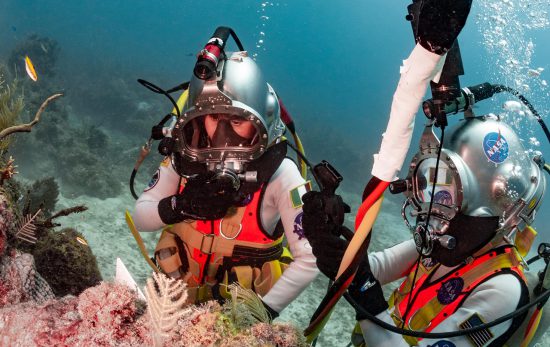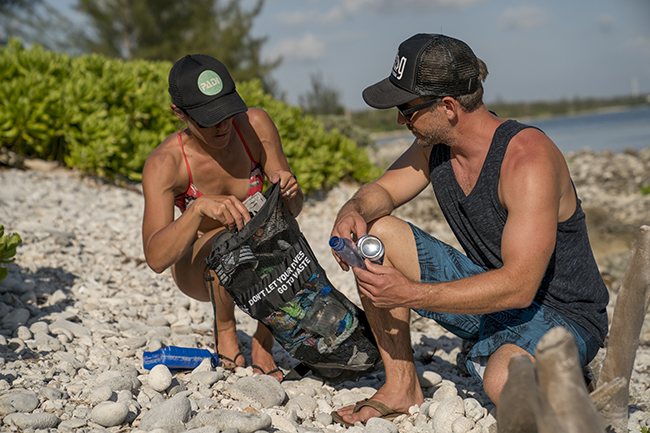There’s an off-the-cuff proverb that says, “Doom must be predicted if it is to be avoided.” There’s truth in this, but it’s also important to have hope because without it, people usually tend to stop trying. So while there’s ample coverage about threats to the environment (all of which eventually affect the oceans), let’s also highlight what’s being done.
Here are some examples I’ve noticed of the many trends, ideas, and innovations pushing back against environmental threats. Some are big, some are small, nor will all necessarily be part of the ultimate solution to the related problem. But, they all show that we’re doing, acting and making moves in the right direction, that we can have a clean Earth, and that we can make a difference. I don’t have room for all the details, so follow the links to learn more.
Clean Air

Transitioning to emissions-free energy, we still have the issue of getting rid of greenhouse gases already there – not only long term, but immediately to buy time. An interesting initiative accordingly, European engineer Daan Roosegarde erects 7 metre (23 foot) Smog Free Towers in public places to remove particles via ionization, paying for the towers via donations (plus, they look pretty cool). On the more pragmatic side, scientists at the University of Delaware have (in the lab so far) simplified turning air CO2 into methane that can be used instead of fossil methane, but beyond fuel, some companies like Newlight Technologies are learning to capture methane instead of releasing it, for conversion into synthetic materials like non-oil plastics.
The viability of gas carbon conversion into fuel or material remains to be seen, but there are some absolutely-will-work cleaner-air initiatives, too. As reported by Science News, ecologist Tom Crowther of ETH Zürich estimates that we can add .9 billion hectares/2.47 billion acres of forest without displacing existing cities/agriculture, etc., and doing so would pull in about 66% of the carbon released since the start of industrialization, buying badly-needed time to shift away from fossil-based fuels. That’s not far-fetched – in July, Ethiopia planted 353 million trees in just 12 hours, aiming to plant 4 billion this year.
Agriculture Advances

Solar and agriculture are teaming up. As reported by Science Daily, planting crops beneath solar panels does more than keep one from displacing the other. Shade helps crops thrive with reduced sun (some actually grow bigger) and less irrigation, while the plants cool the solar panels, making them more efficient.
Also in agriculture, vertical farming is coming to the fore. Stacking layers of produce not only uses water more efficiently, but these farms are either covered or indoors, vastly reducing the need for pesticides. This is good news in the face of recent honey bee declines, but there’s a more exotic innovation, insect-sized drones programmed to pollinate. It’s proposed that this helps bees, not just agriculture, by robot-pollinating crops that (for bees) require more labor with less nutrition, leaving the bees to pollinate (for them) high payoff plants.
Pulling Out the Plastic

Taking on the plastics problem, it’s cool to see technologies already emerging to clean the oceans. Two examples, Seabins capture about 1950 kg/4000 lbs of close-to-shore ocean plastic daily, while Ocean Cleanup aims at using long, skirted floats propelled by natural forces to cost-effectively take on the ocean “plastic patches.”
That’s the big pieces, and but what about microplastics? Irish teenager Fionn Ferreira just won the Google Science Fair by showing us how we can remove microplastics from water with a magnet, but also showing us you don’t have to have a PhD to take on a world problem. Even better, what if we changed the nature plastics? You’ve probably seen the bioplastic trend. Not all bioplastics are biodegradable, but some companies like Veganbottle work within the EN 13432 composability standard for bioplastics.
This post could go on for pages, but I’m guess you see my point. We can’t lose sight of the problem, but we can’t lose sight of the progress either. As ambassadors of the oceans, all of us who call ourselves divers need to be part of the solution. These examples show that by applying our different gifts, talents and thinking, and by supporting these kinds of initiatives, each of us can be part of the changes the world needs.
Dr. Drew Richardson
PADI President & CEO


